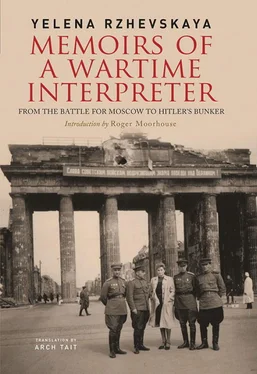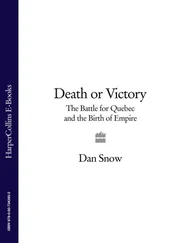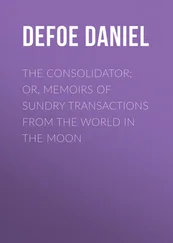I just sat there dejected, switched off. What the hell was I doing here anyway? I would stand on my head to prove, to clarify, to persuade, but no matter what digging I might do, the unyielding inhumanity would be there to stop me. Here was the proof. At that time there was no way I could bring it to the surface. I just had to live with it, another secret.
I was so jealous of my working hours in the archive: there was no telling, perhaps they had already put a time limit on them and would suddenly announce, ‘We’ve let you work here but that’s enough,’ but I continued to sit there, my enthusiasm wilting in the face of total wretchedness. It was not because I am so brave, it was because of the sheer intolerableness of the situation; there in that top secret folder was my own name. It was unendurable. I scrubbed it out.
The foreign press was excitedly debating what should be done as the twentieth anniversary of the end of the war approached. Under the statute of limitations then in force, a criminal who had not been charged with his crime within twenty years could not be held legally liable for it. So was Hitler still alive? How would the law play out in his case if he suddenly showed up? It was at this moment that the sensational ‘admission’ by Mihail Arnaudov, the Bulgarian who had accompanied us to the surgery of Dr Blaschke, became public knowledge. He claimed to reporters to have identified Hitler’s teeth, but became muddled over details. In fact, however, Arnaudov had already been exposed: ‘The False Witness’ was the damning caption under his photograph in the press. He had, nevertheless, done us a great service. Almost simultaneously, a photo of Fritz Echtmann appeared in Stern in 1964. He is photographed taking the oath in the Berchtesgaden court where he confirmed that he identified Hitler’s teeth and could therefore certify that he was dead.
The name of Heusermann cropped up too. I received a clipping from Die Welt in which she recalled our first interrogation in Buch on 10 May 1945, when she definitively recognized Hitler’s teeth, and how we showered her with thanks.
So they were both alive. But what had happened to them? Perhaps they had quietly been used as dental experts. Perhaps among our top bureaucrats there was one who could boast that his false teeth were as good as Hitler’s. Who could tell?
After many more years there chanced to come into my hands some pages of Käthe Heusermann’s memoirs. These had not been published: they were in typescript and with sentences inserted in places in her own handwriting. Poorly photographed, at times indecipherable, there was nevertheless enough that was legible to tell me about the outrageous, monstrous injustice she had suffered in Moscow. After rendering a uniquely important service to history, Heusermann was held as a dangerous criminal first in the Lubyanka, then in Lefortovo Prison in solitary confinement for six years!
In Lefortovo, finding the isolation intolerable, she rebelled and loudly demanded some company at least. A woman was moved into her cell: a cousin of Hitler (who had never met him). She and Käthe did not get along well and she again found herself alone.
‘In August 1951 I was finally charged: by my voluntary participation in Hitler’s dental treatment I had helped the bourgeois German state to prolong the war. While attending to Hitler’s teeth I could have killed him with a bottle of water and thereby done the world a favour.’ What are we to make of this? Was it lunacy, barbarism? Was it the shameful silencing of a witness? Or a bit of all three together?
I was sentenced to ten years in severe regime labour camps, less the six and a half years I had spent in solitary confinement. I signed, accepting the sentence, and was glad to be sent to a ‘corrective’ forced labour camp along with other women who were my fellows in misfortune, finally getting out of that stone dungeon in Moscow. In December 1951, along with three other German women and several men, I was despatched in a cattle truck to Siberia.
Falling between such stone idols as Stalin, Zhukov and Hitler, who attract all the limelight of history, silently, inconspicuously a human life was crushed.
In the camp in Taishet [700 km northwest of Irkutsk], lacking the strength to fulfil the labour quota, Heusermann was put on penal rations. She received no parcels because her relatives knew nothing about her. She would have died of starvation had it not been for another prisoner who became her lifelong friend, a Carpathian Jew, as Käthe calls her, who spoke German. This woman was able to meet the quota and, earning a little money, had a few rubles to spend when the mobile food store came round. She shared her food with Käthe and, when released before her, memorized the addresses of her relatives. She let them know about her and Käthe began receiving parcels.
Käthe Heusermann was in prison for ten years. The end of her camp term coincided with a visit to the USSR by Chancellor Konrad Adenauer, who reached an agreement with Khrushchev about returning German prisoners to Germany. Then came the end of her sentence, transfer between prisons, arrival at Moscow’s Bykovo Airport. After all the nightmare she had lived through, accommodation was provided in a well-furnished house near Moscow with a garden and a library of German books. According to Heusermann this was where Field Marshal Paulus ‘served’ his sentence. Now she was leaving, there were amazing courtesies – after all her torment, a fascinating sightseeing bus trip round Moscow: the Kremlin, the University and, above all, the Moscow Metro ‘with its artistically designed stations’. She specially liked Mayakovsky station. All that was in the run-up to her departure by train for Germany. ‘And then we were off, in sleeping compartments with white bedlinen and silk lampshades, to Berlin.’
Alas, her fiancé or husband, returning from Norway and not receiving news or even knowing if she was alive, waited five years before marrying and raising a young family. Käthe was forty-five when she returned.
In these notes Käthe writes that she had a good life in Düsseldorf. For a while she worked in a dental practice, then retired with an enhanced pension. Her Carpathian Jewish friend came to stay with her in Düsseldorf every year. Happily, she did at least live another forty years after her release, a free woman. I learned she was alive from documentary filmmakers who wanted to interview us as witnesses to Hitler’s death for some anniversary.
An Australian film director who made a film titled The Berlin Wall suddenly stopped shooting and, evidently thinking something over, said to me, ‘How would it be for you to meet up with Heusermann?’ Startled by the unexpectedness of the suggestion, I bristled: ‘Why? What could I say to her?’ I had been spared, but had evidently myself come within a whisker of her fate.
I know that if we had not found Käthe, Stalin’s plan would most likely have been successful and Hitler, as Stalin wanted, would have remained a myth and a mystery. Without Heusermann it would probably have been impossible to refute his version of events. But what a scandalous price was paid, without our knowing it, for achieving our goal. What suffering we unwittingly doomed Käthe Heusermann to endure. That burden of guilt will never leave me.
Shortly before her death, Käthe and I were reunited, if only on the screen, filmed separately for a German film, each of us with her role in Berlin in those days of May 1945.
In 2000 the State Archive of the Russian Federation presented an exhibition of newly declassified documents under the title, ‘The Agony of the Third Reich: Retribution’. For me personally this event proved momentous. There were many interesting and important documents on display, including some I had never seen before.
Читать дальше











